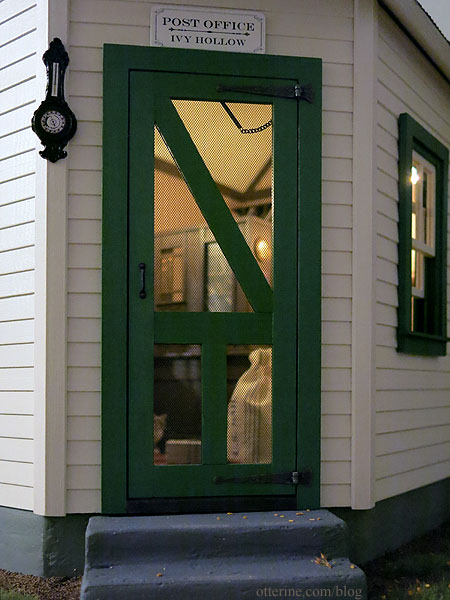Completing work on the screen door. My base wall with siding gives me a wall 3/8″ thick, so I need to pad the interior wall further. Being that this is an angled wall, it’s not as simple as it would have been on a straight wall. I have some ideas on disguising the added wall thickness modification, but more on that to come later when I glue the structure together.
I painted the frame Woodland Green to match the doors, and the threshold is stained using Bittersweet Chocolate mixed with Staining Medium by Americana. I’ll do more for the threshold once I get the porch and interior floor completed, but I wanted some color on it while finishing the doors.
I installed working Pennsylvania strap hinges by Olde Mountain Miniatures for the screen door.
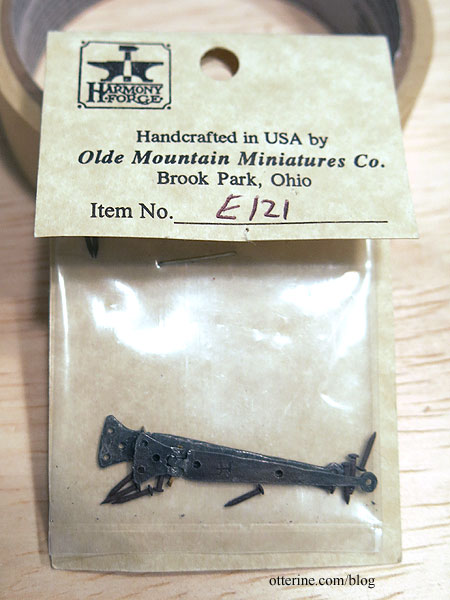
I replaced the nails from the package with tiny threaded brads by Classics.
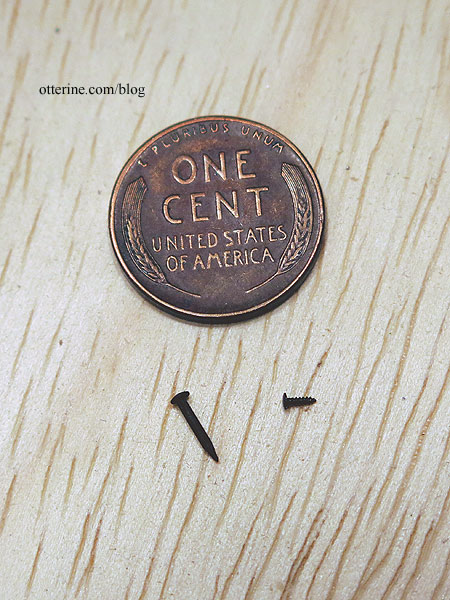
The hinges might be a bit heavy for a screen door, but the more modern ones just didn’t look right for shape or finish. Perhaps these were reused from a broken down shed in the area. The hinges have brass pins, which I touched up with black paint once installed.
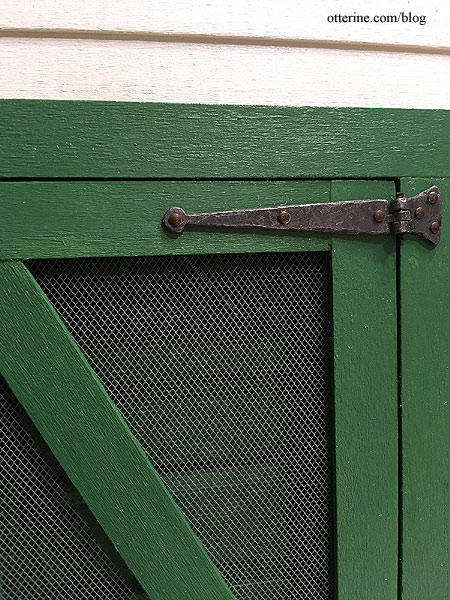
For the handles, I used window pulls by Classics, making sure to install them higher than the door knob of the solid door. Though they started as gunmetal, I painted them flat black with a satin finish. The front one has the tiny brads, but I faked the nails on the interior with glue and paint. My door wasn’t thick enough to have back-to-back nails.
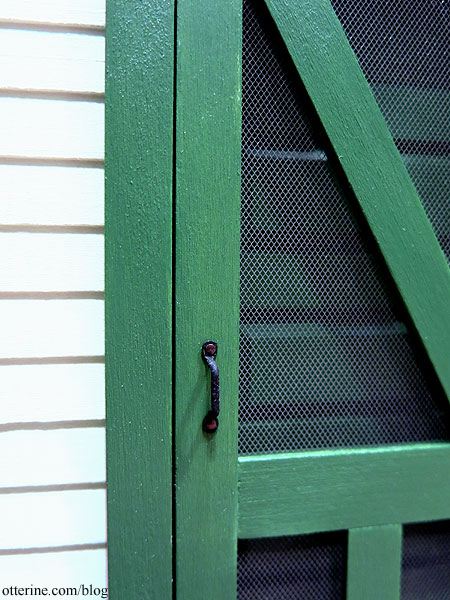
I tried to research the history of screen door hardware, but I ran into a lot of sites selling refurbished or reproduction hardware without much commentary on what was used when. The most interesting pieces were the antique spring-loaded hinges in some beautiful designs. I’m going with what I remember from my childhood farm memories – a spring and hook latch. :]
The hook latch and eyelets come from The Ironworks.
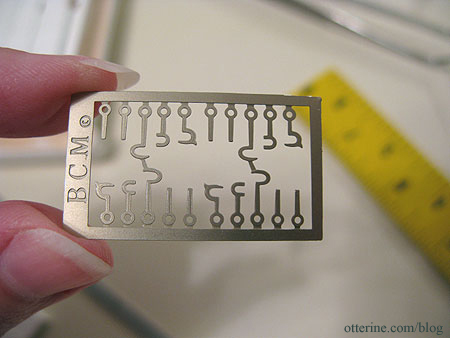
Bill sent me length of thin spring awhile back, and I put it in the bits-n-bobs box for a time such as this. I opted not to install this so that opening the screen door will actually pull the spring for two reasons. The spring is likely to stretch out of shape over time, but more to the point, the spring has a tension force greater than the strength of tiny eyelets and some glue. boioioioing!
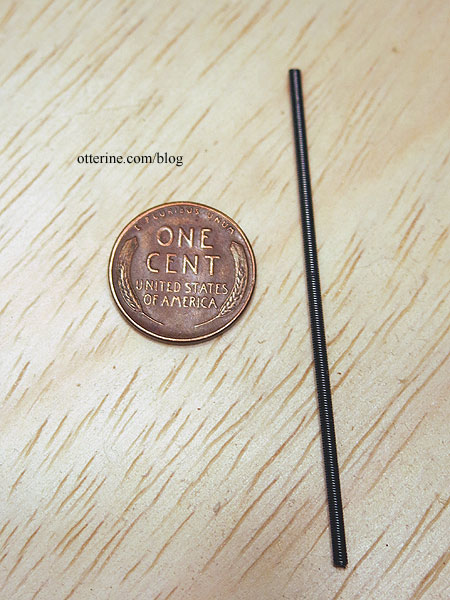
So, we fake it! I’m actually doing a mix of a typical screen door spring and storm door stop chain. This is probably more modern, but it will add visual interest overall. I cut down the spring and used an X-Acto blade to force the end rings open to make eyelets at each end. I threaded one spring end onto one of the laser cut eyelets.
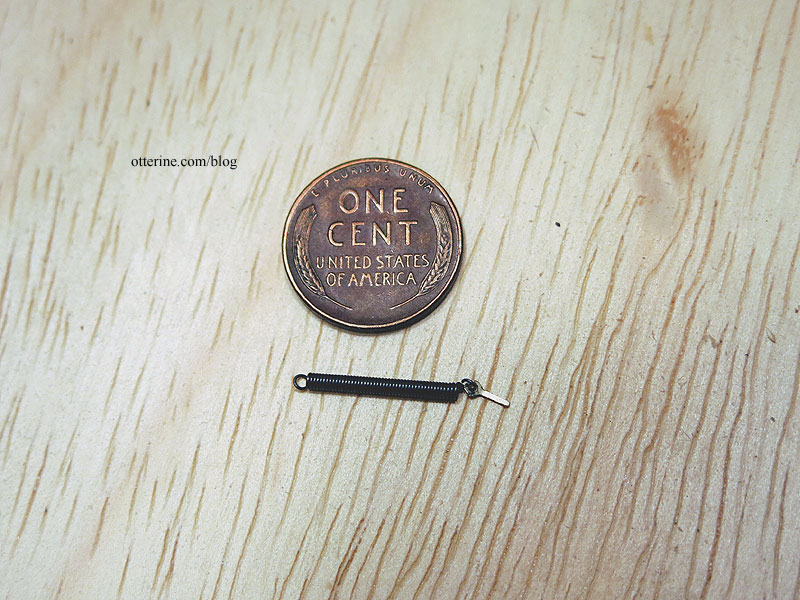
I made another eyelet at the end of a length of thin black wire, determined where the chain would connect to the door frame, drilled a hole and inserted the wire through. The length gives some added durability just in case the chain gets pulled too hard. I cut a channel for the wire and taped it in place.
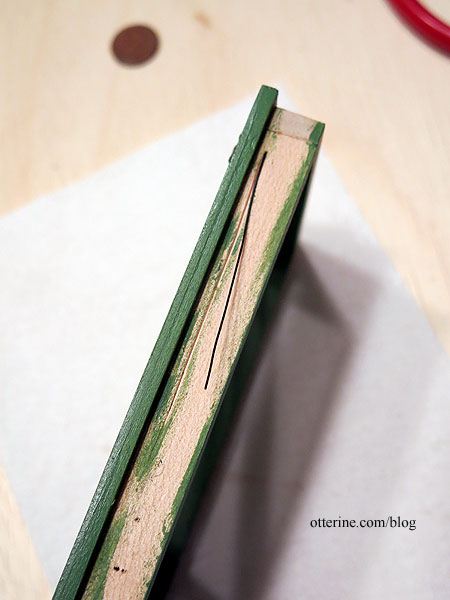
The chain hooks into this eyelet as well as one end ring of the spring.
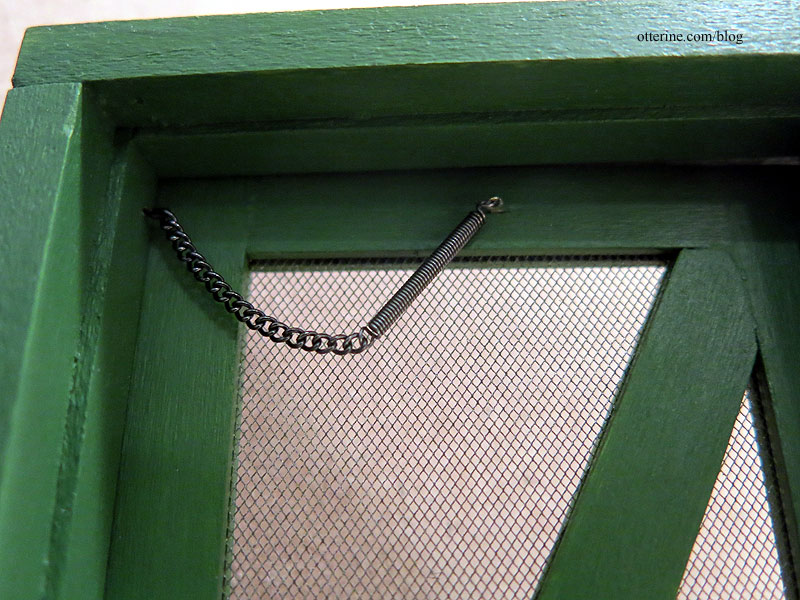
I glued the eyelet into the screen door, being careful not to drill through to the front side.
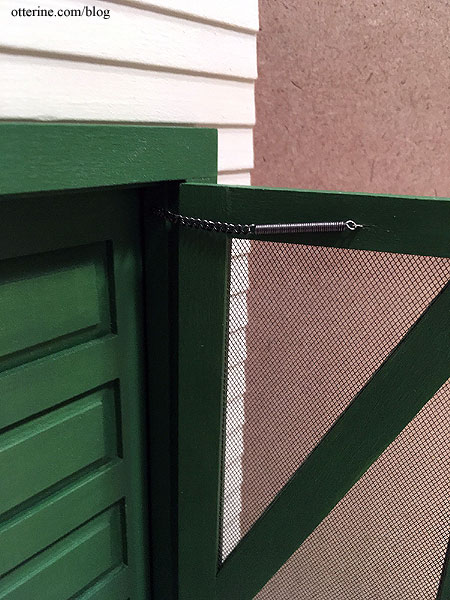
I love the way it looks, just visible through the screen. :] It will be more prominent when the solid door is open.
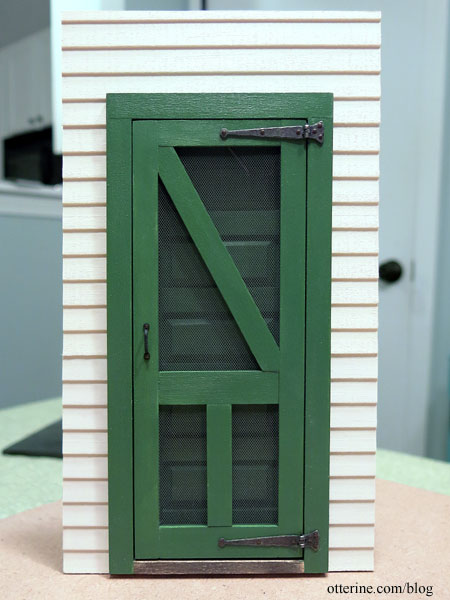
And, finally the hook and latch. This also has a handmade eyelet on the door with the laser cut hook and eye. This is not easy to hook, mainly for having to use tweezers to do so, but even a hook latch hanging loose adds some realism.
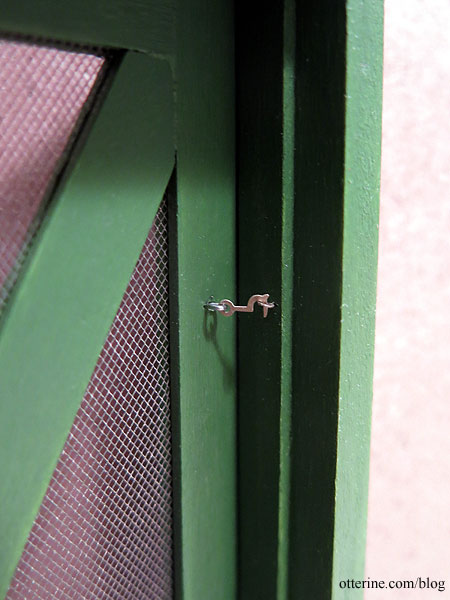
During final assembly, I added the door hardware to the solid door.
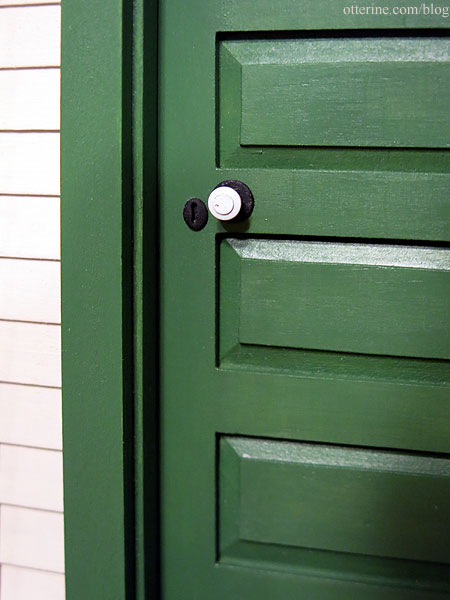
Since the lock rail and the lock box are roughly the same height, I decided to not inset the lock box for fear of making a mess of it. This hardware is so hard to see on the interior as it is, it was hardly worth the risk, but I filed the idea away for another time and another door.
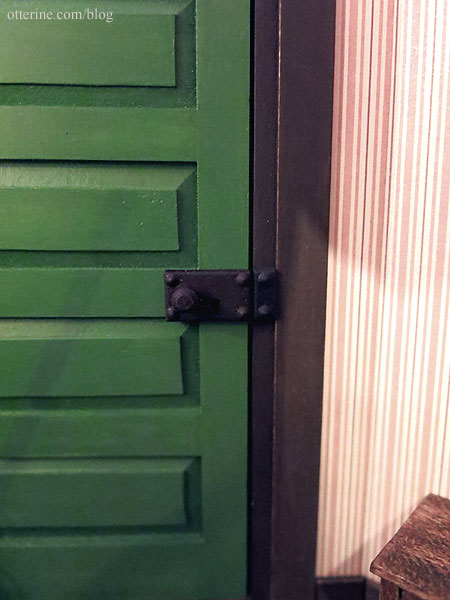
It was a lot of work, but I will definitely make another screen door in the future.
